
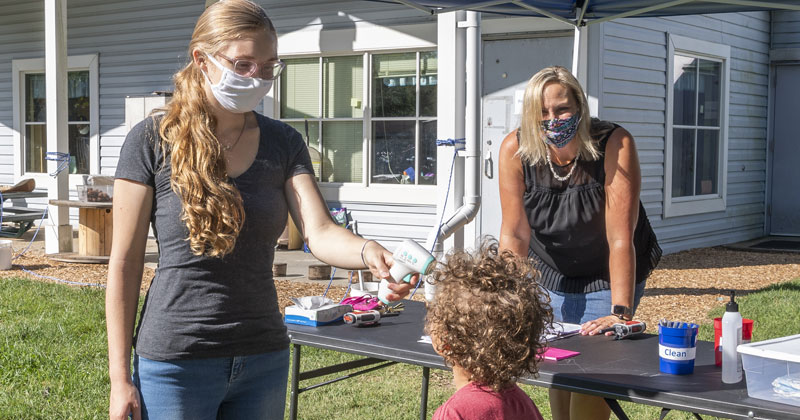

Learners and Leaders
Lessons learned from the pandemic
August 19, 2021
What happens when our homes became our schools, and our screens became our classrooms?
Some students faded from the picture, becoming heads of households virtually overnight, babysitting younger siblings while their parents worked, or working when their parents could not.
Teachers, many of them parents and caregivers themselves, developed lessons for both in-class “roomers” and on-line “Zoomers,” occasionally witnessing once-private situations that they would have never seen in person.
Classes become an entirely new experiences, accompanied by fresh opportunities and unexpected challenges. Some instructors livened the discontented dynamic with music; others edged forward through experimentation and improvisation.
Unfamiliar paradigms emerged. Families found they had broader access to teachers, as special-needs kindergarteners learned to troubleshoot their own tech glitches.
The educational world changed, dramatically, instantaneously, for better and worse, as learners and leaders groped for new ways forward. Here, Blue Hens share some of their lessons learned.
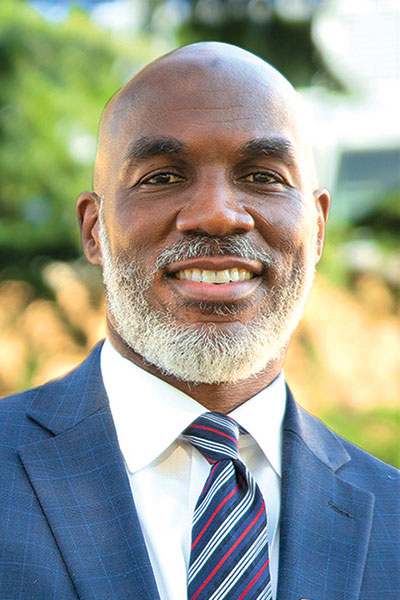
Addressing Community Needs
Initially, we had to ensure that every student had access to technology—to devices, broadband, Wi-Fi. But access didn’t guarantee use, and use didn’t guarantee deep understanding. Families were adjusting; staff members were adjusting. People were being laid off. One of the first things we learned at UD was Maslow’s Hierarchy of Needs, and that quickly came back to me as a school leader. We had to address food, clothing, shelter—those immediate necessities. For a time, we were doing more feeding than engagement or instruction.
We were trying to find an educational response to a health crisis. But we had other pandemics: social injustice; hot, contested elections; things our students were observing and witnessing. It put a lot in perspective. Fundamentally, it made us ask, how are we in tune with what our community needs, and how do we address and prioritize those needs?
One of the things we’ve really embraced is youth voice. We retrofitted a school bus and traversed the community to give students an opportunity to let us know how they’re feeling and what they’re dealing with. We also deconstructed the whole system: The value of custodial staff, nutrition workers, nurses (who became contract tracers and later sourced vaccines). And we helped elevate our communities in ways that brought the value back to public education.
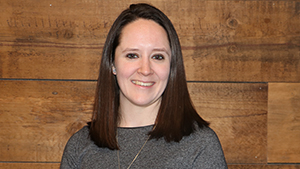
Making space for what has never been
When the pandemic hit last March, I was a tech coach supporting grades 7-12. It quickly became apparent that our teachers, just like our students, needed to be met where they are. We began scaffolded professional learning at two different levels for teachers to self-select weekly topics, whether it was adding captions to a video or developing content for students with different learning needs.
I remember learning very early that many of my high schoolers would not be attending any synchronous learning because they were working full-time or solely responsible for younger siblings. That had never happened before. But we said, “OK, that is where your needs are right now, and we support that, and we’ll meet you. We’ll build asynchronous content, and you’ll get high-quality instruction to continue with your education.”
While the reason for all of this was certainly negative, the push into effective tech-integration has been phenomenal. Moving forward, I think we’ll see continued growth and confidence. I hope we’ll also begin to rethink assessments: What is most effective? What is most authentic to measuring growth? How will that continue to evolve?
We’re just scratching the surface of what education could look like moving forward.
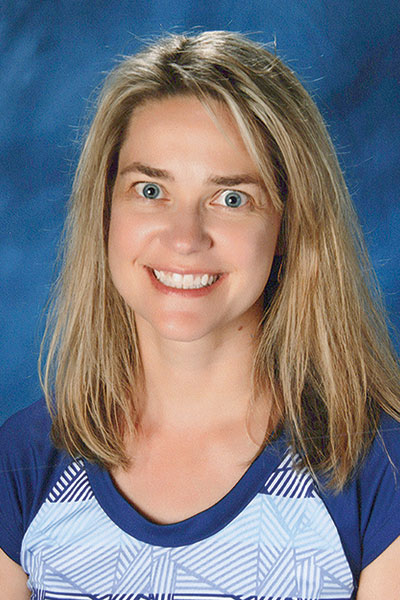
Shared challenges and opportunities
Throughout the past year, my students and I faced many technology challenges together. Someone had to reconnect to a meeting, or a website wasn’t loading, or the camera or microphone wasn’t working. So, we’d repeat the same phrases: “Hmm, what should we try next? Let’s go with Plan B.”
Students hear what their teacher is saying and soon begin to repeat the same phrases. Even my five- and six-year-olds were soon troubleshooting. I’d hear comments like, “I can’t see you, Mrs. Uberti. I’m going to log off and try again.”
Small issues that seemed so stressful at the beginning of the year taught us to be flexible. The students sensed and learned that, too. They quickly developed a greater independence with technology.
Technology even enabled some of my families who were busy with work commitments during the day to engage with me at more convenient hours, allowing these families to take part in more conferences and become an integral part of their students’ education.
Although remote teaching/learning was far from ideal, I was pleasantly surprised with how capable even my youngest learners proved to be and the lessons that they took away from our experiences.
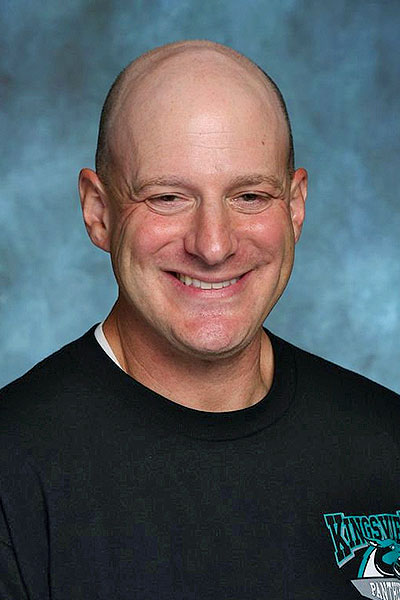
Building personal relationships
Personal relationship building has to take place. Whether in-person, six feet away or virtual, getting to know your students is incredibly important, and technology has actually helped with some of that. We use things like Nearpod, which is basically like Power Point and Google Slides on steroids, where you can also see, in real-time, what students are doing. I remember Zoom as a 70s TV show, but there are special features—polls, chats, breakout rooms—that make lessons interactive and allow students to be more independent in this format.
I also start out my classroom with a song that students choose. We’ve done everything from the Barney theme to ACDC to Taylor Swift to the Beatles. It’s a really good way to start class. We try everything we can.
Contact Us
Have a UDaily story idea?
Contact us at ocm@udel.edu
Members of the press
Contact us at 302-831-NEWS or visit the Media Relations website


